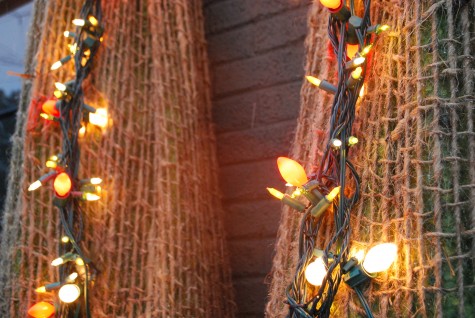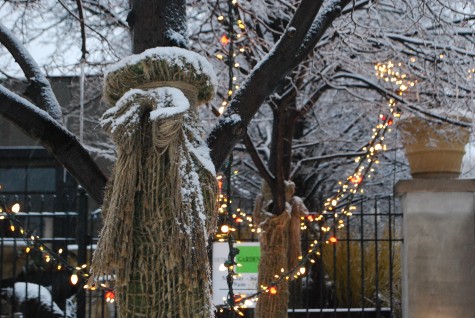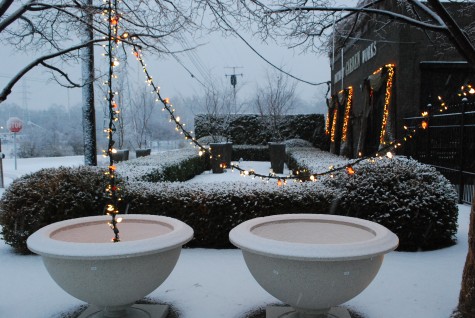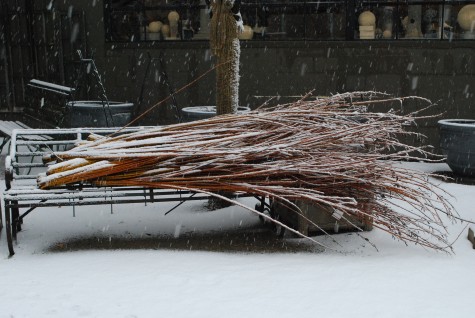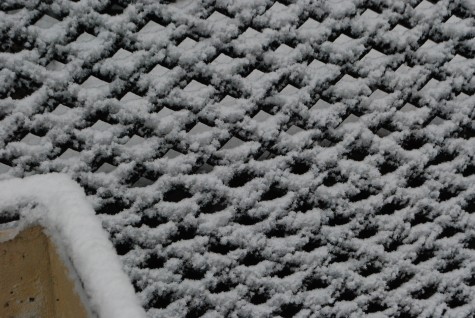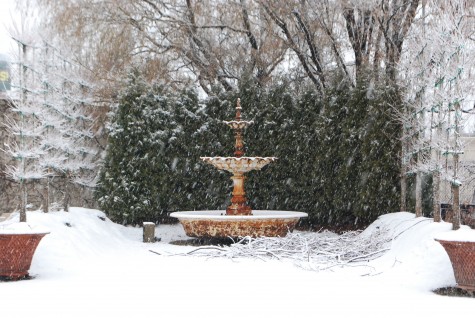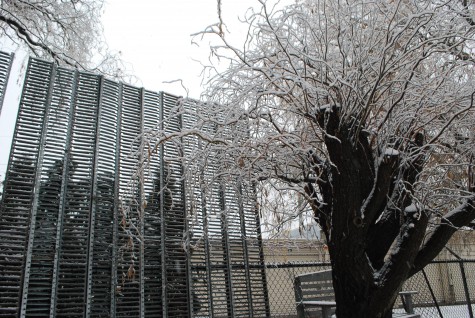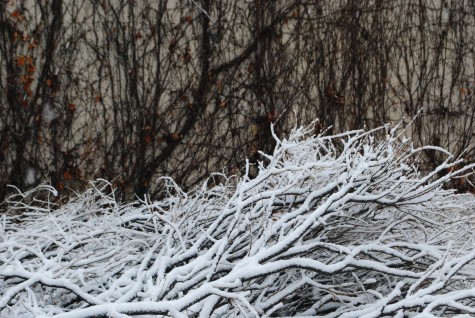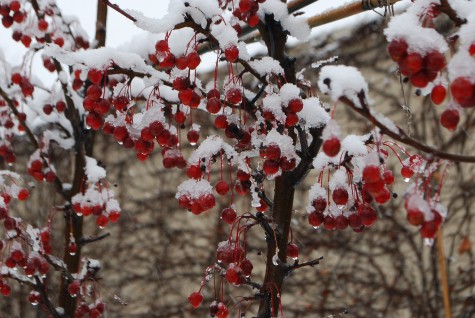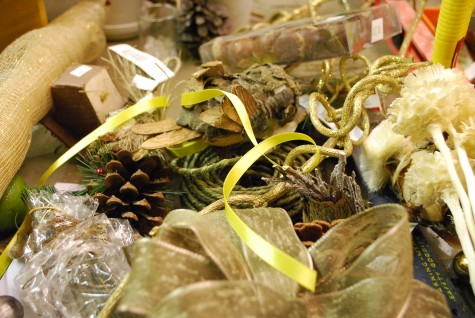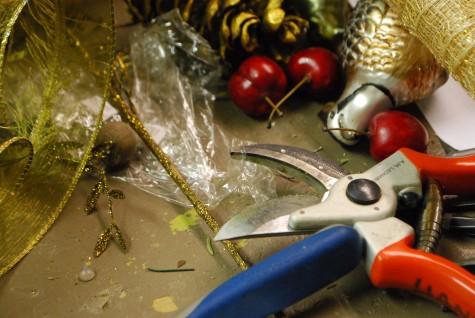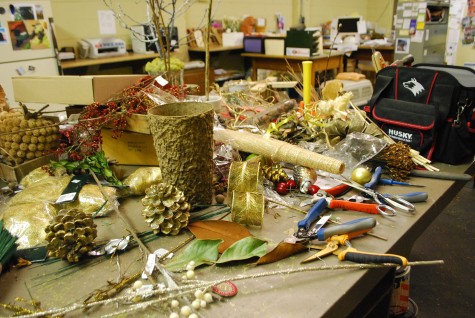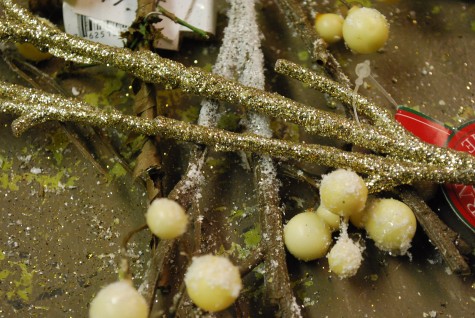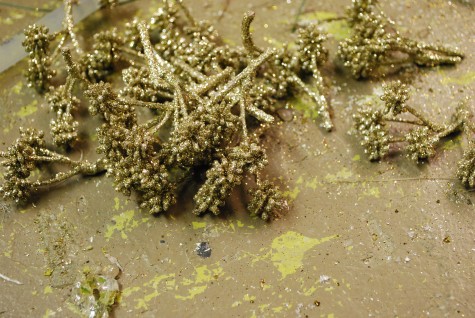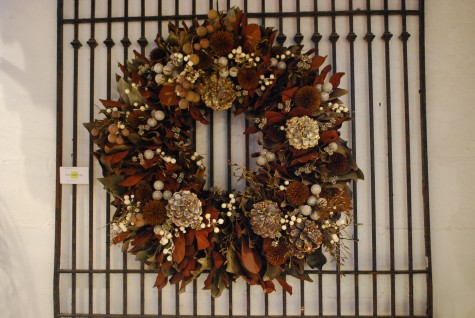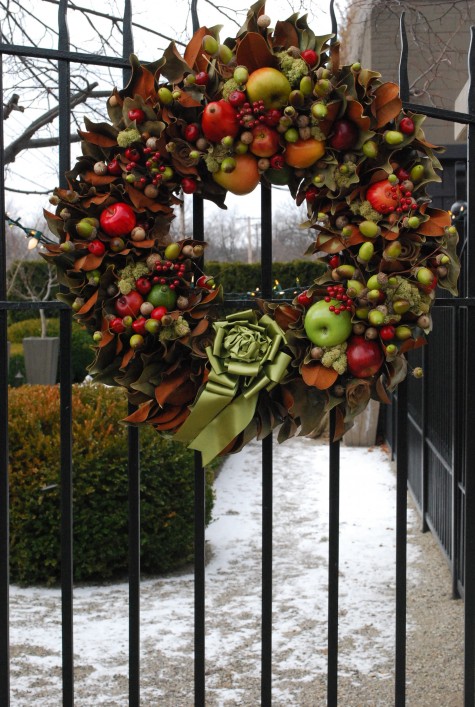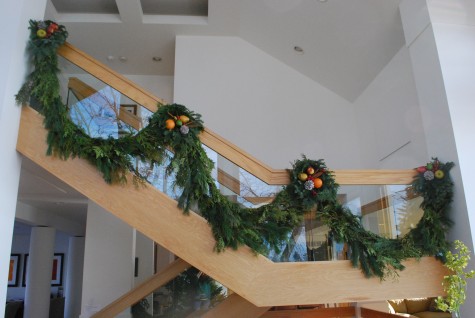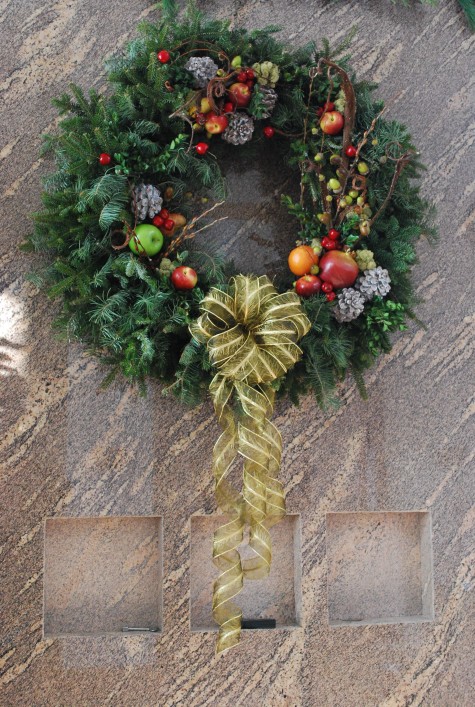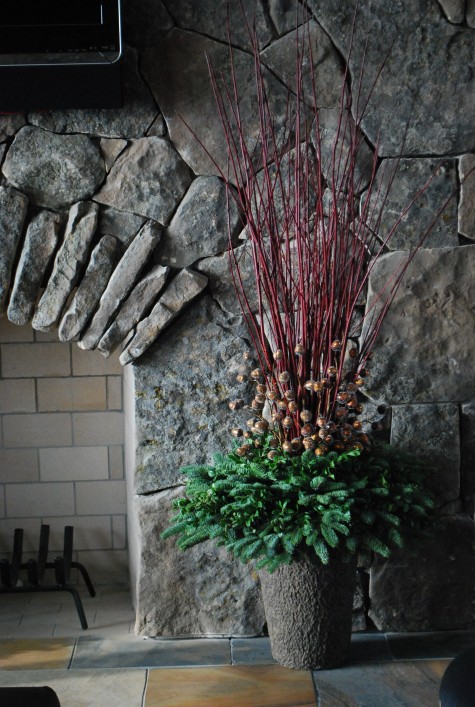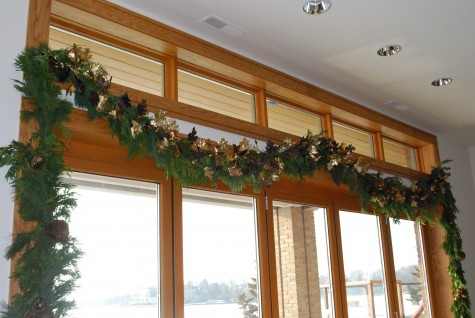It is great fun for me to outfit the front of the shop for the winter. I can do the work in bits and pieces. I can change my mind, or change direction. I do it up as little or as much as I want. I spend lots of hours at work, so I have time to look at it and think. It is still dark when I get to work, so I see what it looks like at night. Though I hate like heck repeating myself, I did drape the windows with burlap again this year-that’s how much I liked the look. Those went up weeks ago, before the winter work rush.
Jenny and Pam wrapped the trunks of the linden trees. Given the recent temperatures of 7 and 8 degrees, this not only looks plausible, it looks like a good idea.
Steve and his crew hung the drapes, and made the light garlands. What started out as white orange green and gold lights are now white, gold and red. I seem to be in the mood for red. Part of that inclination comes from an unexpected source. A client who purchased a new home was not so thrilled with the 17 trees jammed into a small urban lot. A number of them were Japanese maples, impossible to transplant. Though I am not a big fan of Acer palmatum, it was hard enough to chop them down, much less pitch them out. So those tall branches have a home in my 6 pots out front. Red-leaved Japanese maples branches-what can I do to honor them?
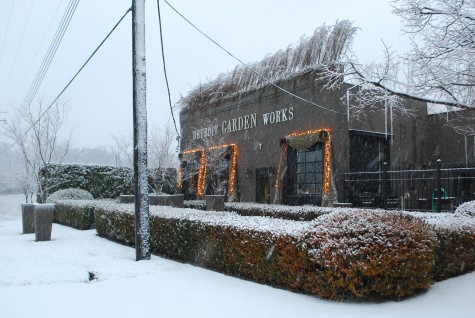 This picture should make obvious that any gesture in the landscape needs to be a substantial one. This looks for all the world like I just barely got going-which is true. I am thinking a little red would do this scene a world of good. Red in the landscape tends to read in a very subtle way-so I am also thinking that whatever red I plan to put here needs to be a lot.
This picture should make obvious that any gesture in the landscape needs to be a substantial one. This looks for all the world like I just barely got going-which is true. I am thinking a little red would do this scene a world of good. Red in the landscape tends to read in a very subtle way-so I am also thinking that whatever red I plan to put here needs to be a lot.
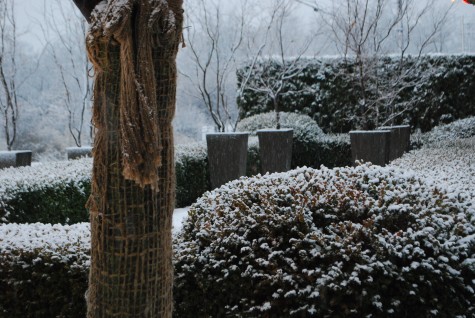
Everything in sight has that bronzy brown hue; even my boxwood goes orangy brown with cold weather. It is beautiful, in a very austere way. There are months ahead where austere will rule-I am not ready for that yet.
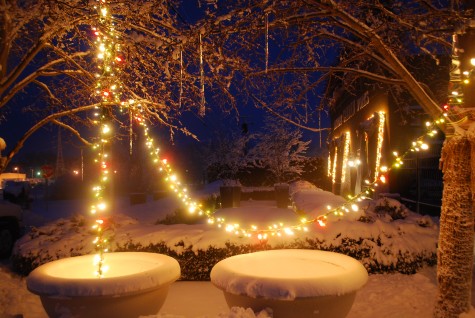
The lighting adds a lot of color and sparkle, but I did not have a good idea about how to introduce daytime color until a few days ago. Rob and I have had discussions on and off this season about the problem of berries. Berries in a winter landscape sound great-but the choices are not so great. Good looking artificial berries tend to be paper wrapped. This means they are intended for interior use. All plastic berry stems are not so great looking-unless you are a considerable distance away. Spraying the winterberry with a strong antidessicant has worked so far for me, but they make a modest red gesture-not a big one. So maybe some berries for all these branches.
 These snow covered branches look great, illuminated by the lights on the drapes. I so wish I had gotten some berries on these branches before the snow, but I am sure there is snow to come. I cannot remember the last time we had snow and very cold temperatures like this so early in December. It was too cold to work outside yesterday-7 degrees, and very windy. Temps in the 20’s today will seem like a heatwave.
These snow covered branches look great, illuminated by the lights on the drapes. I so wish I had gotten some berries on these branches before the snow, but I am sure there is snow to come. I cannot remember the last time we had snow and very cold temperatures like this so early in December. It was too cold to work outside yesterday-7 degrees, and very windy. Temps in the 20’s today will seem like a heatwave.
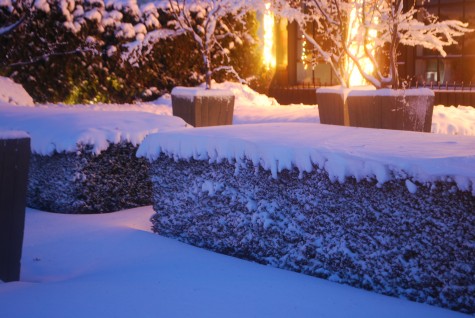 Nature has done her part to frost all of the basic elements of the landscape with a beautiful and thick layer of snow. Hopefully I will be able to finish this up today.
Nature has done her part to frost all of the basic elements of the landscape with a beautiful and thick layer of snow. Hopefully I will be able to finish this up today.
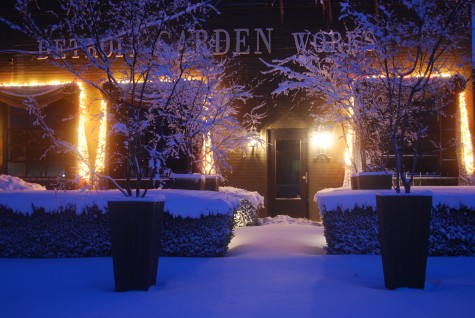
This looked just fine early this morning; I am hoping for better later in the day.
